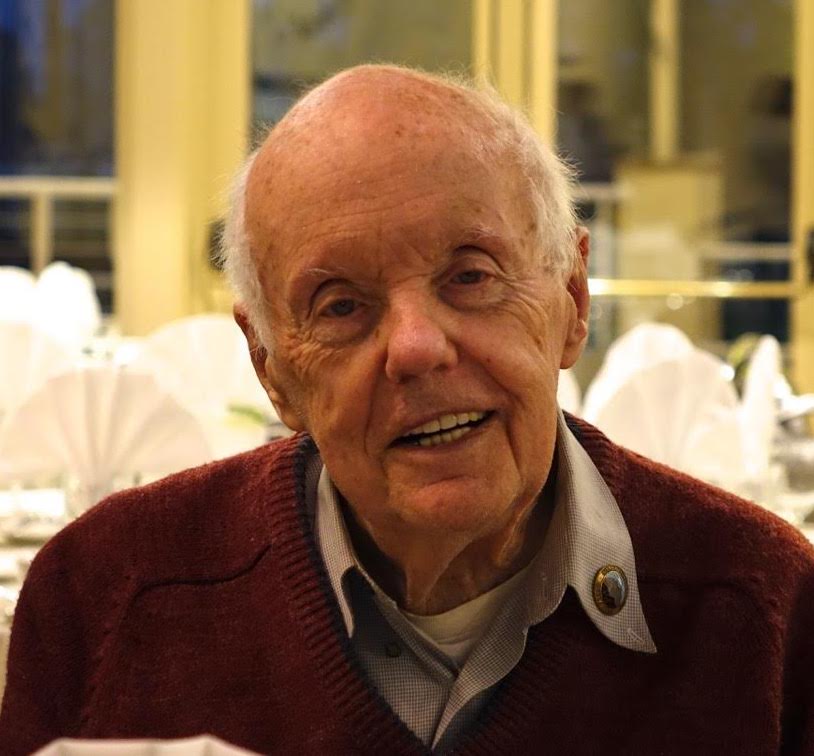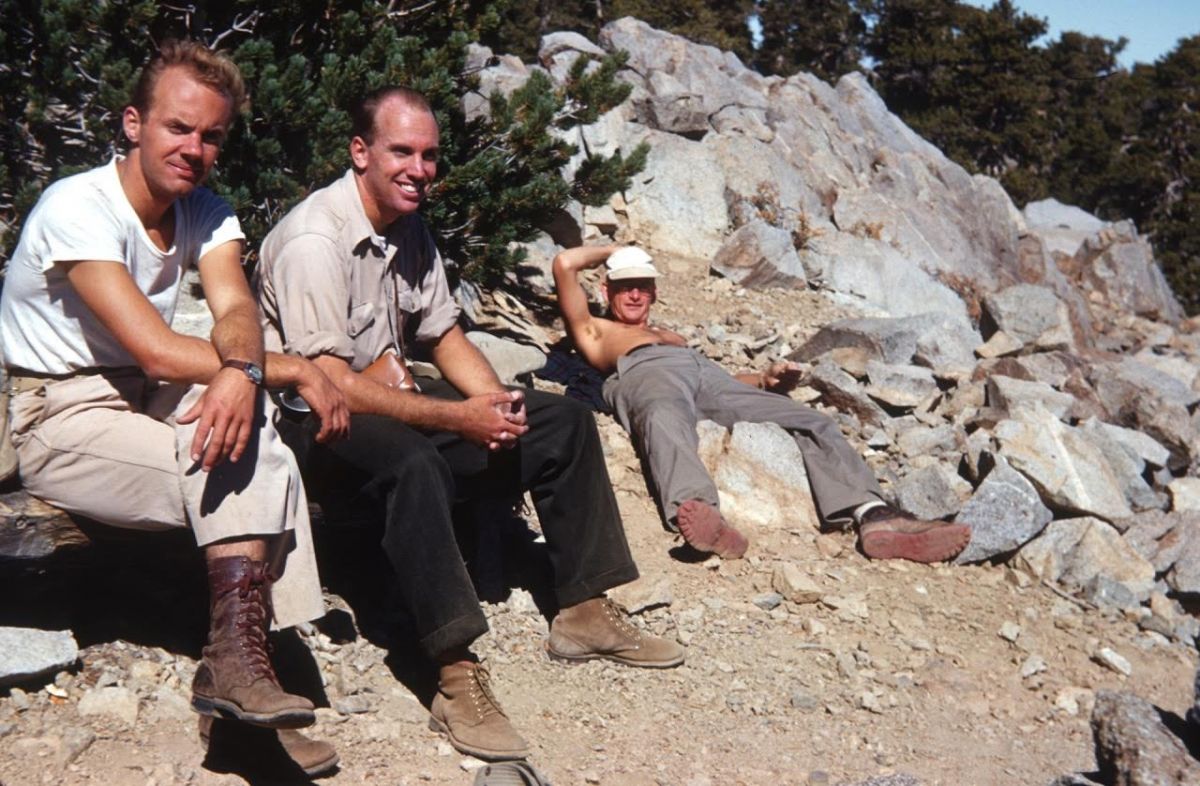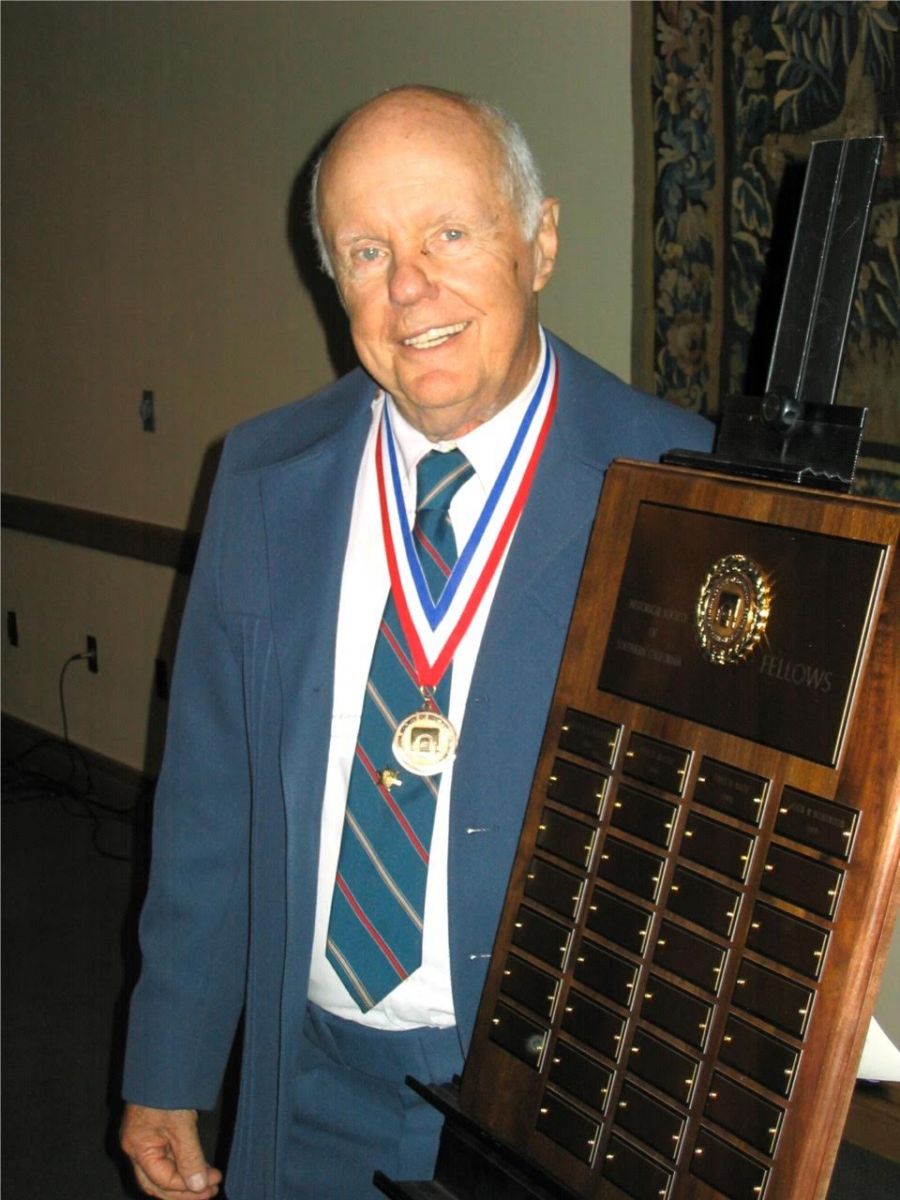Appreciation: John Robinson, Sierra Club leader, hiker, climber and author
 |
| John Robinson. Sierra Peaks Section Banquet, January 25, 2015. Credit: Bob Cates |
John W. Robinson was a native Californian, born and raised in Long Beach. He died April 24 at age 88.
After a stint in the army during the Korean War, he attended the University of Southern California, graduating with a degree in history. He pursued a teaching career, working with grade school and junior high students in Orange County until his retirement.
John began hiking with the Sierra Club in the early 1950s, being especially drawn to the Desert Peaks Section. Chapter leader Louise Werner often recounted how she and her husband Niles wondered if this gawky kid would ever become a real hiker! On these early trips John met Frank Sanborn and became indoctrinated by Sanborn’s vision of forming a new group dedicated to climbing Sierra Peaks. Thus it was that John starting leading trips in a really big way, by co-leading the first official Sierra Peaks Section (SPS) outing with Sanborn on the first weekend of May 1956.
 |
|
John Robinson, left, Frank Sanborn, Lyle Pyeatt on an outing to Shields and Anderson Peaks in the San Bernardino Mountains, 1953. Credit: Photo courtesy of Frank Bressel
|
The early SPS provided John with his first real post-university literary experience, since he served as the first editor of The Sierra Echo. John went on to lead outings for many other chapter entities, including the Hundred Peaks Section (HPS), Local Hikes Committee (LHC), Chapter History Committee, and of course the Desert Peaks Section (DPS).
One of John Robinson’s hallmarks has been his open-handedness and joy at sharing his discoveries with others. Nowhere has this been more apparent than in the forty-two Profiles in Mountain History articles he wrote for the Hundred Peaks Section Lookout from 1969 to 1978.
See also an obituary for John Robinson written by author Glenn Pascall.
This brings us to one of those incestuous relationships that abound in the Sierra Club. For it was Walt Wheelock, first Chair of the HPS, who early-on recognized John’s researching and writing talents, and who was the first to pay John for “doing it,” i.e., writing for money for Wheelock’s La Siesta Press.
 |
|
John Robinson with Fellowship Award presented by the Historical Society of Southern California at the Huntington Library, Oct. 4, 2005. Credit: Bob Cates
|
Camping and Climbing in Baja came out in 1967, having arisen from John’s on-the-ground knowledge acquired through leading a number of early Desert Peaks Section and private trips to the sierras of Baja California, including climbs of the notorious Picacho del Diablo. From then on there has been no stopping his literary output. La Siesta Press would go on to publish The Mount Wilson Story (1973), Mines of the San Gabriels (1973), Mines of the San Bernardinos (1977), and Mines of the East Fork (1980).
Robinson’s early hiking achievements had also been linked to his writing abilities by Berkeley-based Wilderness Press, which soon pressed him into service writing hiking-climbing guides to several quadrants of the Sierra Nevada. And then came the two Wilderness Press books that made John Robinson a household-, or at least a trail-side-word, throughout Southern California. These were of course Trails of the Angeles (1971) and San Bernardino Mountain Trails (1972).
Now we must backtrack a little to 1969 and another of those Sierra Club "coincidences."
Just two years after Walt Wheelock "discovered" John, we find Robinson entering into a long and productive relationship with Dawson’s Bookshop. Under the watchful eye and guidance of famed Sierra Club rock climber Glen Dawson, John was to mature into a scholarly writer of note. As was the case with Wheelock, Dawson recognized John’s expertise in Baja California, recruiting him to edit and annotate Volume 17 in the prestigious Baja California Travel Series being produced by Dawson’s Bookshop. This arcane volume is the 1769 travel diary of Jose Joaquin Arrillaga, which by another one of those Sierra Club coincidences was translated into English by long-time Club member Froy Tiscareno.
Eight years later, in 1975, John edited Volume 36 of the series, the now much sought after account of early climbs of Picacho del Diablo by Norman Clyde. At the time this slim volume sold for the outrageous price of $15; it now goes in the neighborhood of $200 to avid collectors of mountaineering literature.
Further collaboration with Dawson’s Bookshop resulted in two scholarly books authored by Robinson: "Los Angeles in Civil War Days" (1977) and "Southern California’s First Railroad" (1978), both issued as part of Dawson’s Los Angeles Miscellany Series.
Throughout the '70s, John was steadily researching and working on what many consider his magnum opus, The San Gabriels, Southern California Mountain History, which appeared in 1977. Volume II was issued six years later in 1983. Copiously illustrated with historical photographs and meticulously researched, The San Gabriels represents the acme of John Robinson’s considerable talents . . . or do they?
In 1989, he covered the entire San Bernardino Mountain Range in another massive production. Four years later he followed with his history of the San Jacintos. And then in 2005 when we thought John was resting on his laurels, out popped the massive "Gateways to Southern California," his now-definitive historical work on the passes leading into our Land of Milk and Honey. Add to this the dozens of articles he has cranked out for historical journals and popular publications throughout the last three decades and you are looking at an incredible literary machine. This prolific output of popular and scholarly works was formally recognized by the Historical Society of Southern California’s presentation of its Fellowship Award to John in an impressive ceremony held at the Huntington Library in 2005.
John’s contributions have been recognized by the HPS and the Angles Chapter. In 1980, the HPS honored him with a Special Award as Mountain Historian. He garnered the Angeles Chapter Media Award in 1976, an Angeles Chapter Outings Service Award in 1990, and the Angeles Chapter Elna Bakker Nature Interpretation Award in 2001.
John Robinson was one of the great outings leaders for the Angeles Chapter and a long-time valued member of the Chapter History Committee. He contributed over 1,400 images to the chapter’s eArchive, including many rare items from his vast collection of historical research materials.
His survivors include three daughters, Cathy Robinson, Robyn Franz and Jeanne Robinson.
Bob Cates is a Sierra Club leader and the Angeles Chapter's Historian.



Comments
Edward H. Lubin (not verified)
May 1, 2018 - 3:24pm
Permalink
John Robinson
Judy (not verified)
May 16, 2018 - 1:58pm
Permalink
Trails of the San Gabriels
Paul Cooley (not verified)
June 26, 2018 - 5:05pm
Permalink
John Robinson and the Sierra Nevada
Add new comment